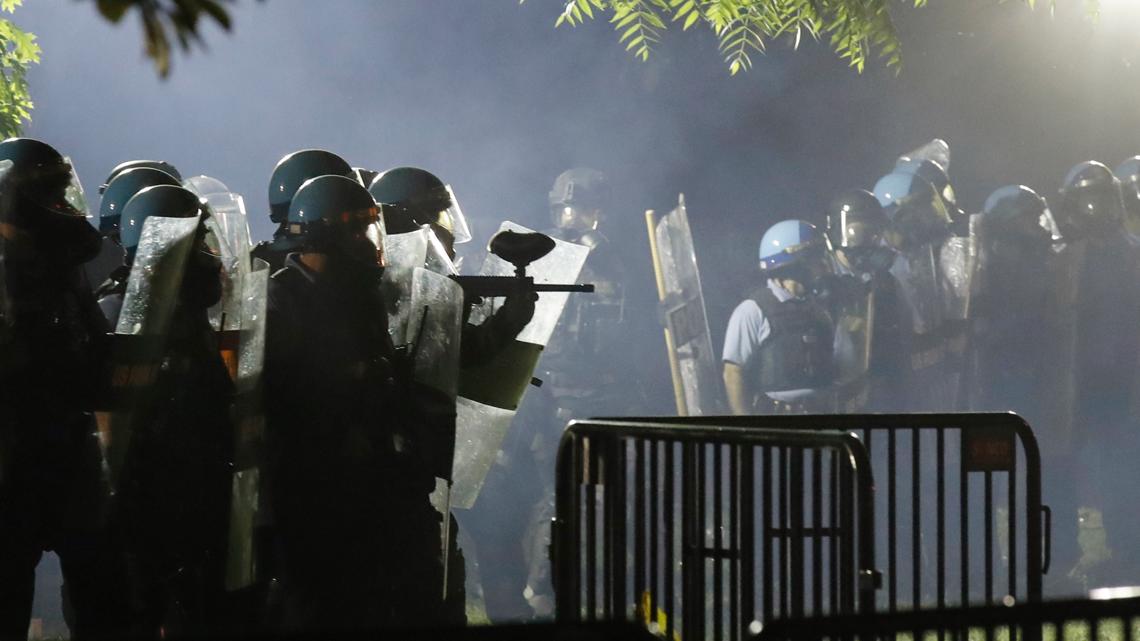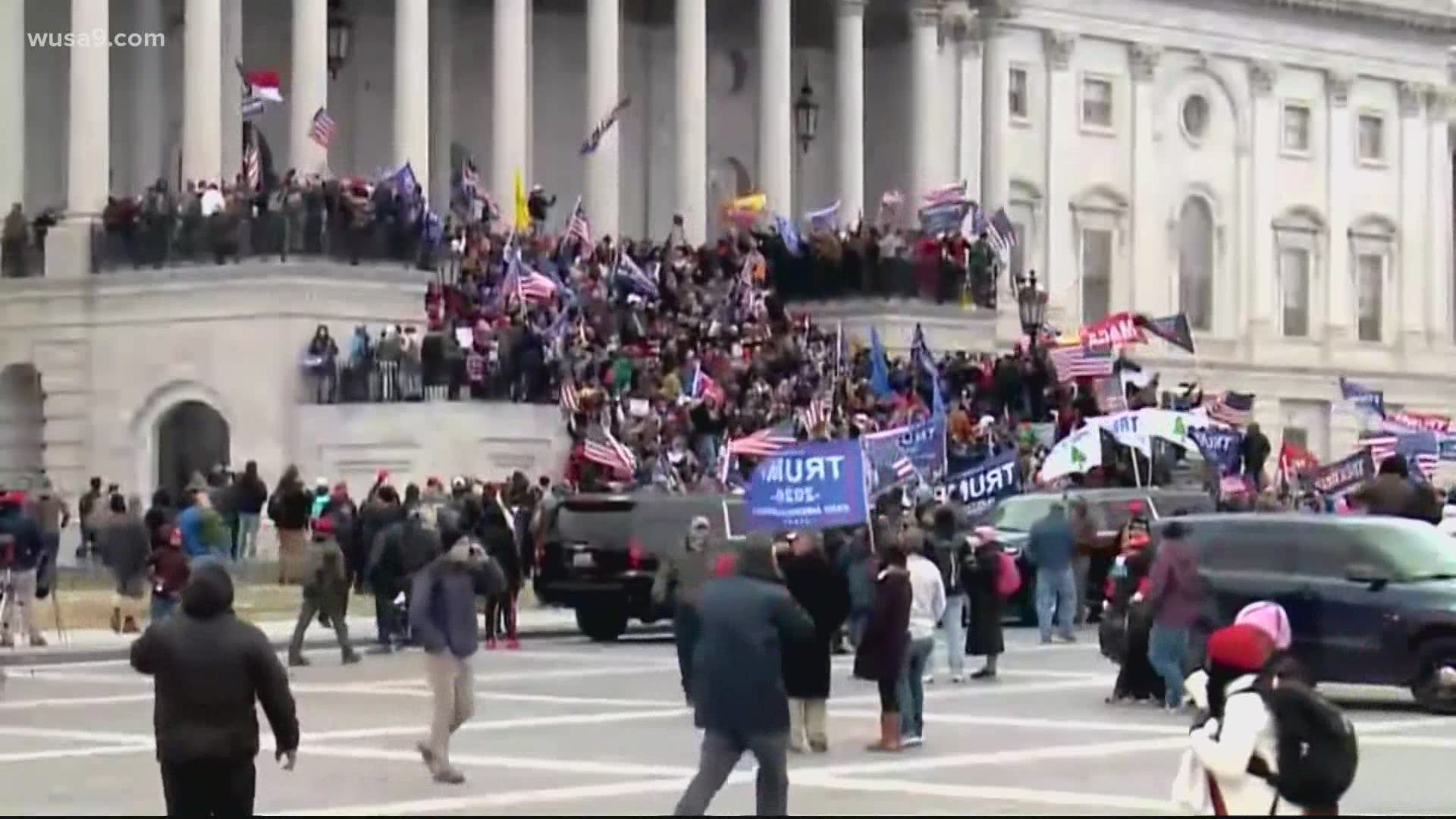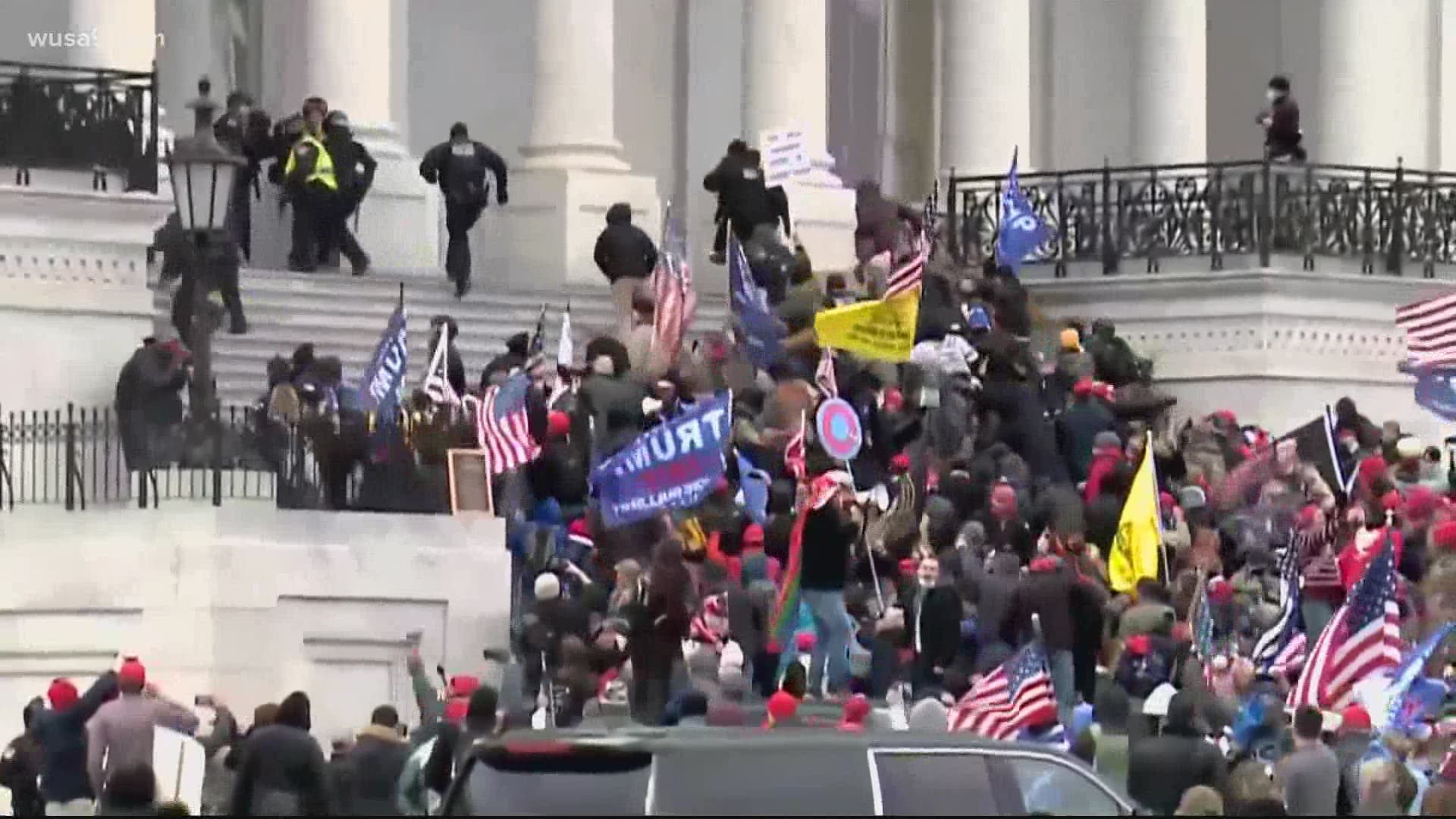WASHINGTON — In June, when Black Lives Matter protests came to D.C., the federal government's response was muscular and aggressive. U.S. Park Police officers used grenade-launched chemical irritants and DC Police employed military crowd control tactics to corral and arrest protesters. Unmarked Bureau of Prisons riot control officers were deployed. A U.S. Coast Guard helicopter was even used to try to disperse a crowd.
But on Wednesday, when a group of thousands of pro-Trump insurrectionists — many of them armed — stormed the U.S. Capitol Building, they encountered an anemic showing of Capitol Police, some of whom were captured on video moving aside barricades and, in one instance, even appearing to take a selfie with the mob inside the building.
It's a tale of two police reactions, and, according to some who study this issue, two Americas: "One that is over-policed, neglected and criminalized, and those are for people of color and immigrants, and then you have an America where you have an entitlement, where you have a privilege and where you can do whatever you want and face very little consequences," said UC Santa Barbara sociology professor Victor Rios.
For many observers of Wednesday's events in the Capitol, including Rios and Maryland Congressman and former NAACP president Kweisi Mfume, it's obvious what role race played.
"Those were two different portraits in terms of police enforcement and police engagement. What I saw yesterday did not compare. It just seemed as if everybody, this mob, was being given deference in terms of their protest, even after the curfew had gone into effect when they legally could have been disassembled," Mfume said. "Whereas, during the Black Lives movement, particularly during the summer, you just saw lines and lines of officers with very little tolerance. It begs the question why, and the only real reason I can come up with is, it’s a matter of race. It’s a matter of judgment that is disinclined to give the benefit of the doubt who did not have the blessings of the President as these mobsters did yesterday."
Video WUSA9 shot on June 1 shows Capitol Police protecting the US Capitol from Black Lives Matter supporters. Despite those protesters making no violent moves, two visible lines of Capitol Police stood guard, rather than getting overwhelmed by rioters as they did on Wednesday.
WUSA9 was also on the ground when federal officers began forcefully clearing Lafayette Square 20 minutes before the 7 p.m. curfew.
Ohio Congresswoman and chair of the Congressional Black Caucus Joyce Beatty was pepper sprayed during a Black Lives Matter protest in June. She shot this video Wednesday of a riot-trashed Senate Parliamentarian’s office:
"I compare it to what we saw with the overly aggressive militarized response to Black Lives Matter protests at the very same Capitol grounds this summer," said Beatty.
"We must also understand why the federal law enforcement response was much stronger at the protests over the summer than yesterday’s attack on Congress," said D.C. Mayor Muriel Bowser.


In June, police showed they were more than capable of handling much larger crowds than showed up for the "Stop the Steal" rally this week. DC Police were criticized at the time for using a controversial crowd control technique called "kettling." But those same crowd control tactics didn't show up on Wednesday.
Instead, the pro-Trump crowd overran Capitol Police and briefly took over the building. In the ensuing chaos and efforts to re-secure the building, more than 50 Capitol and DC police were injured, and at least four people died — including one woman who was shot trying to breach the Senate chamber.
Nevertheless, Capitol Police made little more than a dozen arrests of those who breached the building on Wednesday. D.C. police arrested several dozen others outside the building. In one day of protests alone in June, D.C. police arrested more than 300 people.
Speaker of the House Nancy Pelosi (D-Calif.) and the president of the Capitol Police Officer's Union called for the resignation of Capitol Police Chief Steven A. Sund in response to the department's handling of the event. On Thursday evening, Sund announced that he would be leaving his post on Jan. 17.
The Congressional Black Caucus is hoping the Democratic takeover over the Senate will allow passage of the George Floyd Justice in Policing Act, which, it says, will create new rules for crowd control that are fair to police and protesters.


